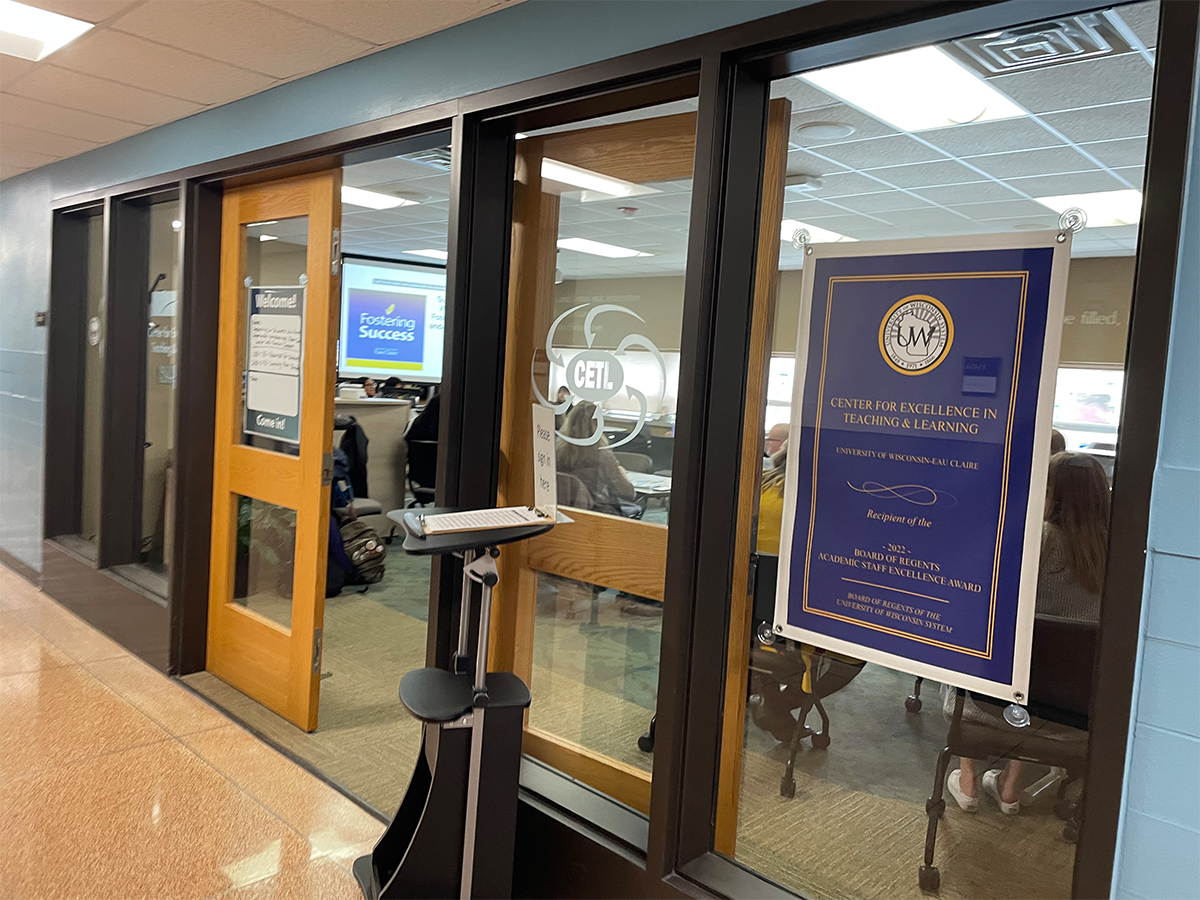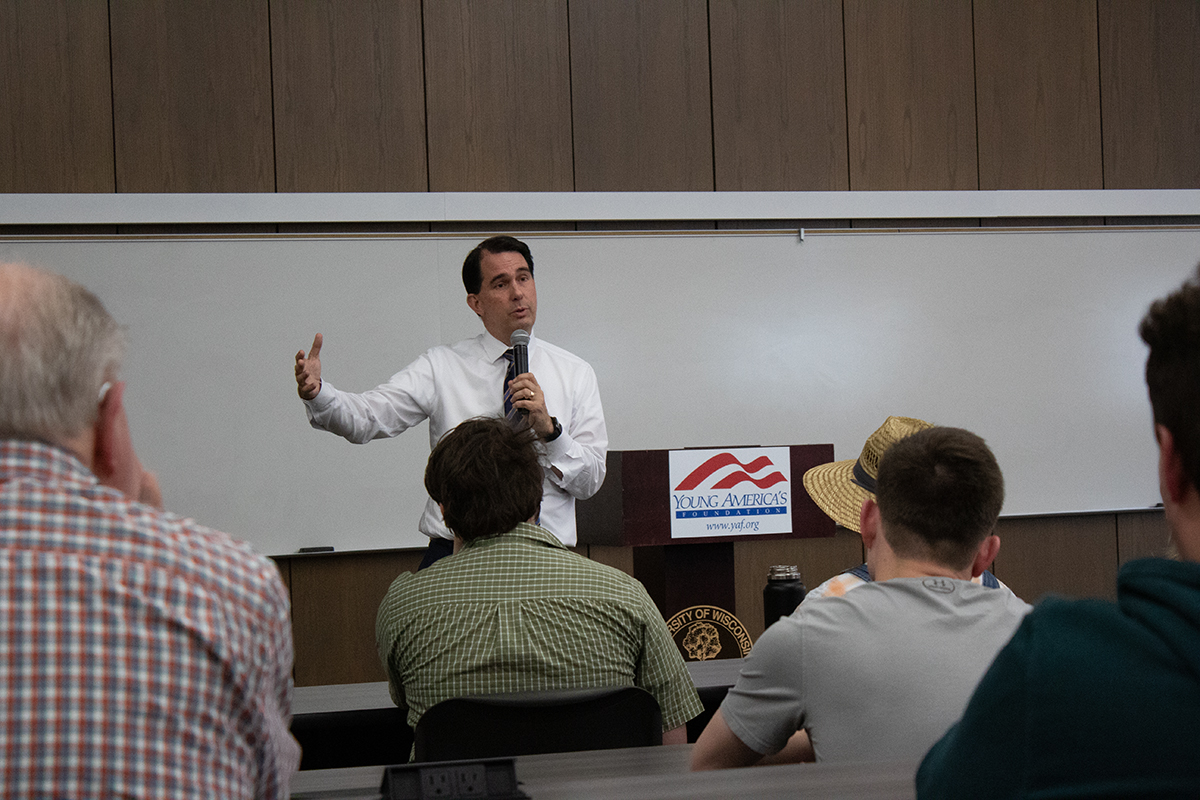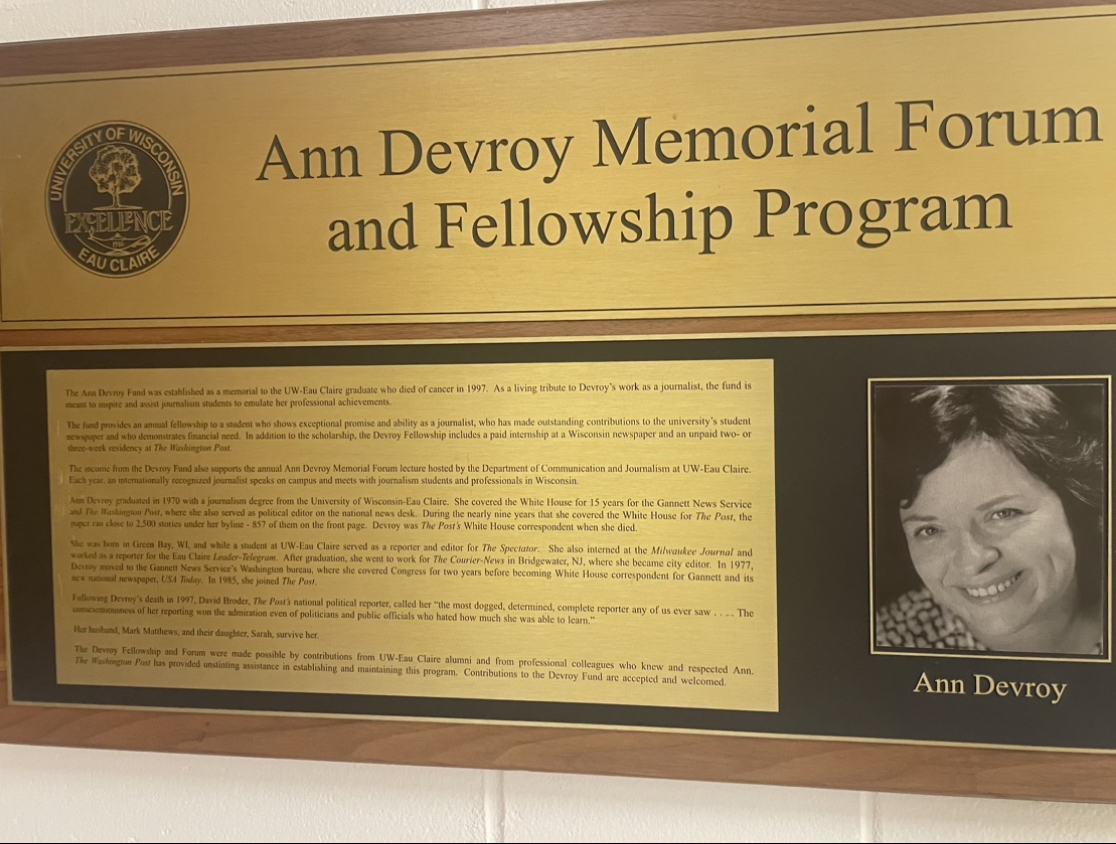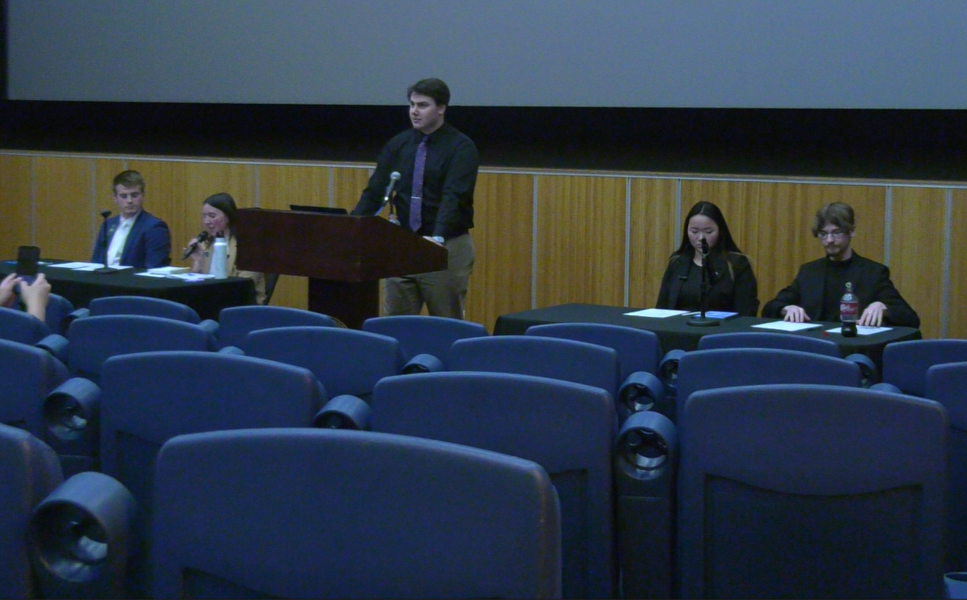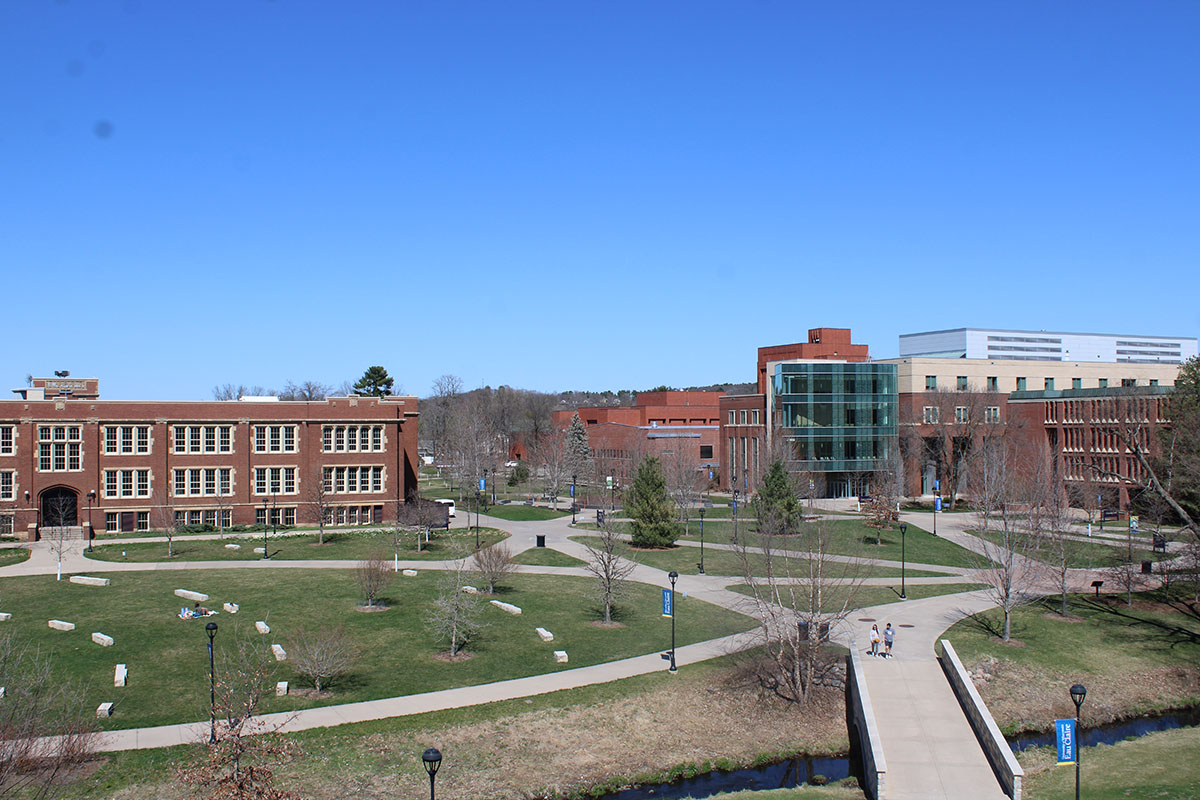The state gave approval Tuesday for engineers to start creating a potential $850,000 land-based stabilization design for the Chippewa River’s south side bank along campus, a university official said.
Such a project, which has been discussed on campus for almost two years, would greatly change the area’s appearance, mainly through the loss of trees.
Facilities Planning and Management Director Terry Classen said the state’s Division of Facilities Development, which is funding the project, gave the go-ahead for a design that would use “geopier” technology and limestone rock chunks (“riprap”) to stabilize the riverbank.
Geopiers are 30-inch-wide holes that would be drilled deep into the top of the bank along the lower campus road, Garfield Avenue, and packed with gravel.
The new design would include a 1.5-foot-by-1-foot riprap slope from the footbridge down river to the Putnam parking lot area. None of the riprap would stick up out of the water, Classen said.
The state’s decision came a day after engineers with the local Ayres Associates presented their study of alternative stabilization solutions on campus to several UW-Eau Claire administrators, faculty and students, as well as community members.
Although some faculty and neighborhood residents say they are pleased with the university’s level of discussion and cooperation in the redesigning process, there are some concerns.
Stan Carpenter, an Eau Claire resident and one of two petitioners against the project’s original design, said more information is needed for approval.
One concern is whether compacting the geopier holes would affect the bank’s stability, Carpenter said.
After completing the new design, Ayres would submit it to the Department of Natural Resources. The DNR then would talk with the two objectors — Carpenter and the Third Ward Neighborhood Association — who either could remove their objections or move the issue to an administrative hearing.
Carpenter said he wants the city to view the new design.
The university unveiled plans for the initial $1 million stabilization design in spring 2001 to address concerns of the riverbank’s stability during a serious flood. It called for a riprap slope, starting 100 feet before the footbridge and extending down to the Putnam lot. The slope would’ve gone up to 70 feet into the river.
Amidst concerns from some faculty, students and community members over its size and need, the DNR denied a permit for the project in December 2001. To avoid a hearing and better please the concerned parties, the university started the process over.
A UW-Madison engineering professor studied the bank last year and reported that it is “highly likely” its instability would extend to the campus road if a flood reached the bank’s top.
A main issue with the current project is whether its size is still unnecessarily large for the bank’s instability problem, associate geology professor J. Brian Mahoney said Wednesday.
The engineers did well in downsizing the project from the original, Mahoney said, “but there’s more work that needs to be done.” The new plan is much less intrusive, but must be examined carefully by the university, DNR and community, he said.
Geography and anthropology professor Sean Hartnett raised issue Monday with the near 18 feet of encroachment the slope would intrude underwater near the footbridge. He said he’d like to see the university’s ramp relocated to face east so the bank could be cut into more, lessening the riprap.
Classen and Ayres Associates said they would consider it.
University officials need to discuss with faculty the length of the design, vegetation at the site and the need for a sidewalk and guard rail along the bank, which is almost certain, Classen said.
The university’s goal is for summer construction, Classen said. This would require the design to be finalized by March so the trees along the bank could be cut down before birds nested there, he said.


